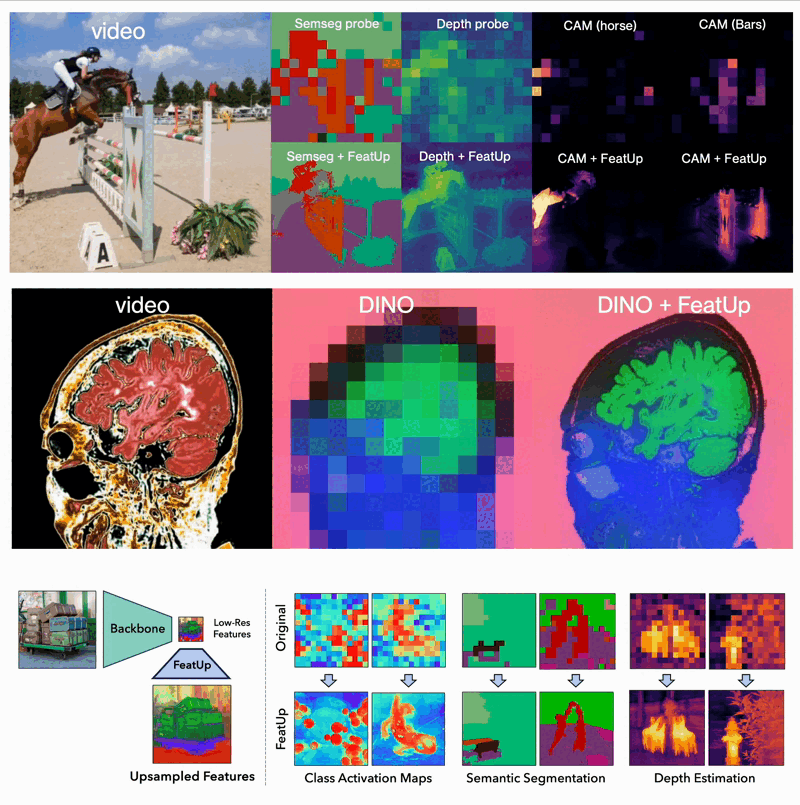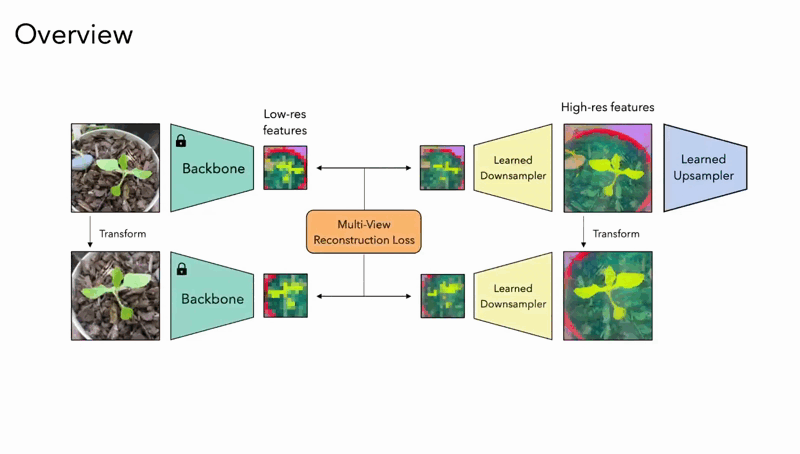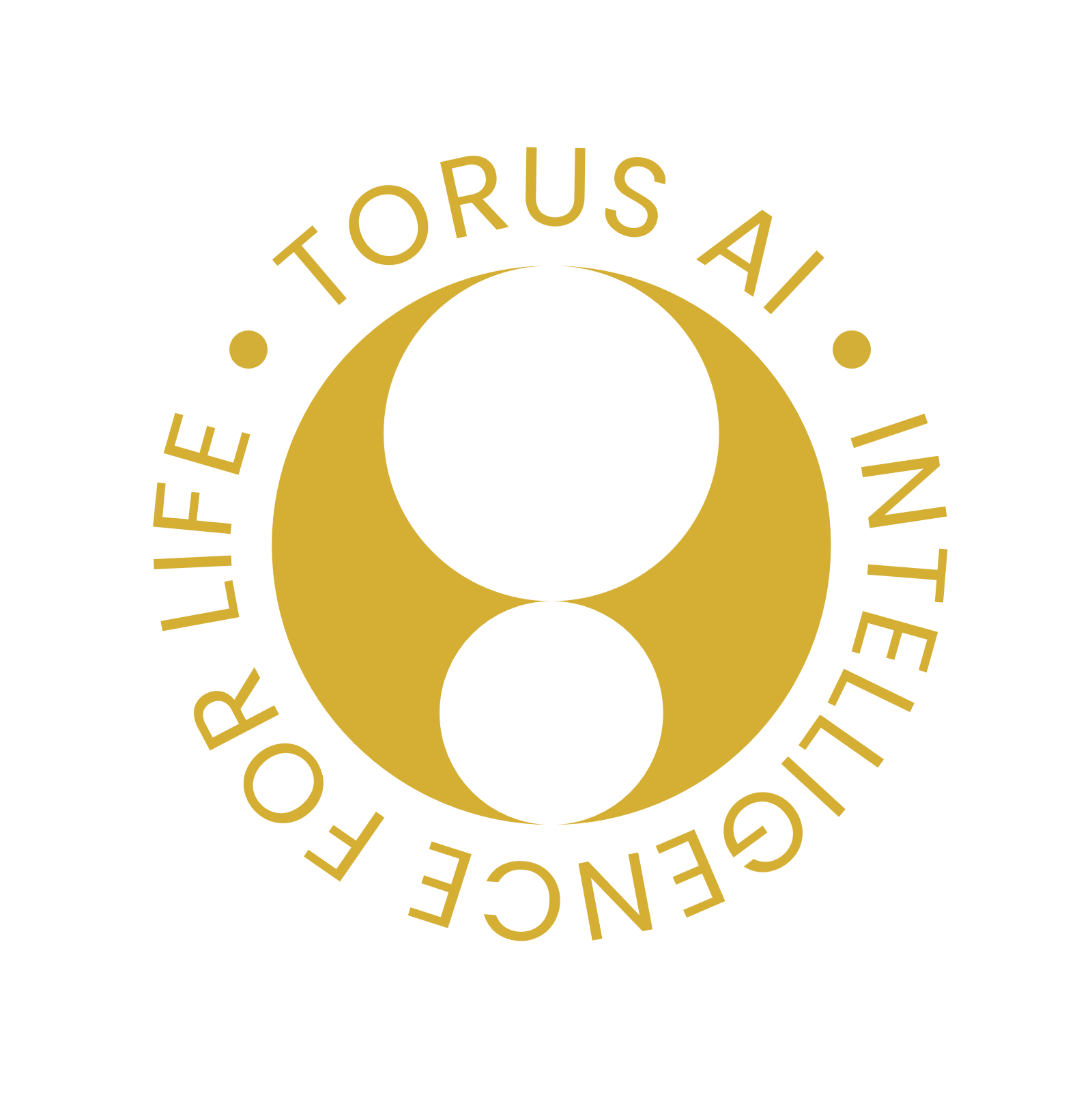FeatUp: A Model-Agnostic Framework for Features at Any Resolution

The world of computer vision is constantly pushing the boundaries of what machines can "see" and understand. A new framework called FeatUp takes a significant leap forward by enabling models to extract high-resolution features from images. This innovation draws inspiration from 3D scene reconstruction techniques, specifically Neural Radiance Fields (NeRF).

Multi-View Consistency
The magic behind FeatUp lies in its core principle: multi-view consistency. Imagine showing a picture to someone from different angles and distances. By analyzing these viewpoints, they can build a much richer understanding of the scene. FeatUp works similarly. It processes the same image from various augmentations (rotated, scaled, etc.) to grasp the underlying high-resolution details. This approach ensures that the extracted features retain their semantic meaning, allowing the model to form a deeper understanding of the spatial relationships within the image.

Two Upsampling Techniques for Different Needs
FeatUp offers two distinct upsampling techniques to cater to different scenarios:
- Guided Upsampling: This method aggregates insights from multiple low-resolution images of the same scene, altered slightly by transformations such as rotation or scaling. The model learns a generalized upsampling filter, enabling it to enhance resolution while adhering to detected semantic consistencies across the varied views.
- Implicit Model Upsampling: For tasks requiring exceptionally high detail from a single image, FeatUp can deploy an implicit model that fits directly to the unique features of that image. This approach closely resembles methods used in super-resolution, where specific characteristics of an individual image guide the learning process to achieve maximum resolution detail without losing semantic accuracy.
The guided upsampling method utilizes a Joint Bilateral Upsampling (JBU) filter, striking a balance between computational speed and the quality of resolution enhancement. The implicit model, on the other hand, allows for infinitely adjustable resolutions by simply fitting itself to a single image – a truly innovative feat.
FeatUp's Impact on Computer Vision Tasks

The implications of FeatUp are vast and transformative for various computer vision tasks:
- Dense Prediction Tasks: FeatUp improves performance on tasks like semantic segmentation and depth prediction by providing high-resolution features.
- Model Explainability: It enhances class activation map (CAM) generation, allowing for more detailed study of a model’s behavior.
- Transfer Learning: FeatUp features can be used as drop-in replacements for existing features, improving performance without re-training models.
- End-to-End Training: When integrated into training pipelines, FeatUp can improve the resolution and quality of features in end-to-end semantic segmentation.
Conclusion
FeatUp offers a robust, adaptable, and efficient way to elevate feature resolution while safeguarding their semantic integrity. Its model-agnostic nature allows seamless integration with existing architectures, unlocking immense potential for advancements in sectors that rely heavily on high-quality visual data processing. This framework not only empowers neural networks to handle intricate spatial details but also establishes a foundational methodology for further innovations in multi-view consistency and upsampling techniques within the realms of machine learning and artificial intelligence.
Paper: arxiv.org/pdf/2403.10516.pdf
Code: github.com/mhamilton723/FeatUp
Website: mhamilton.net/featup.html
